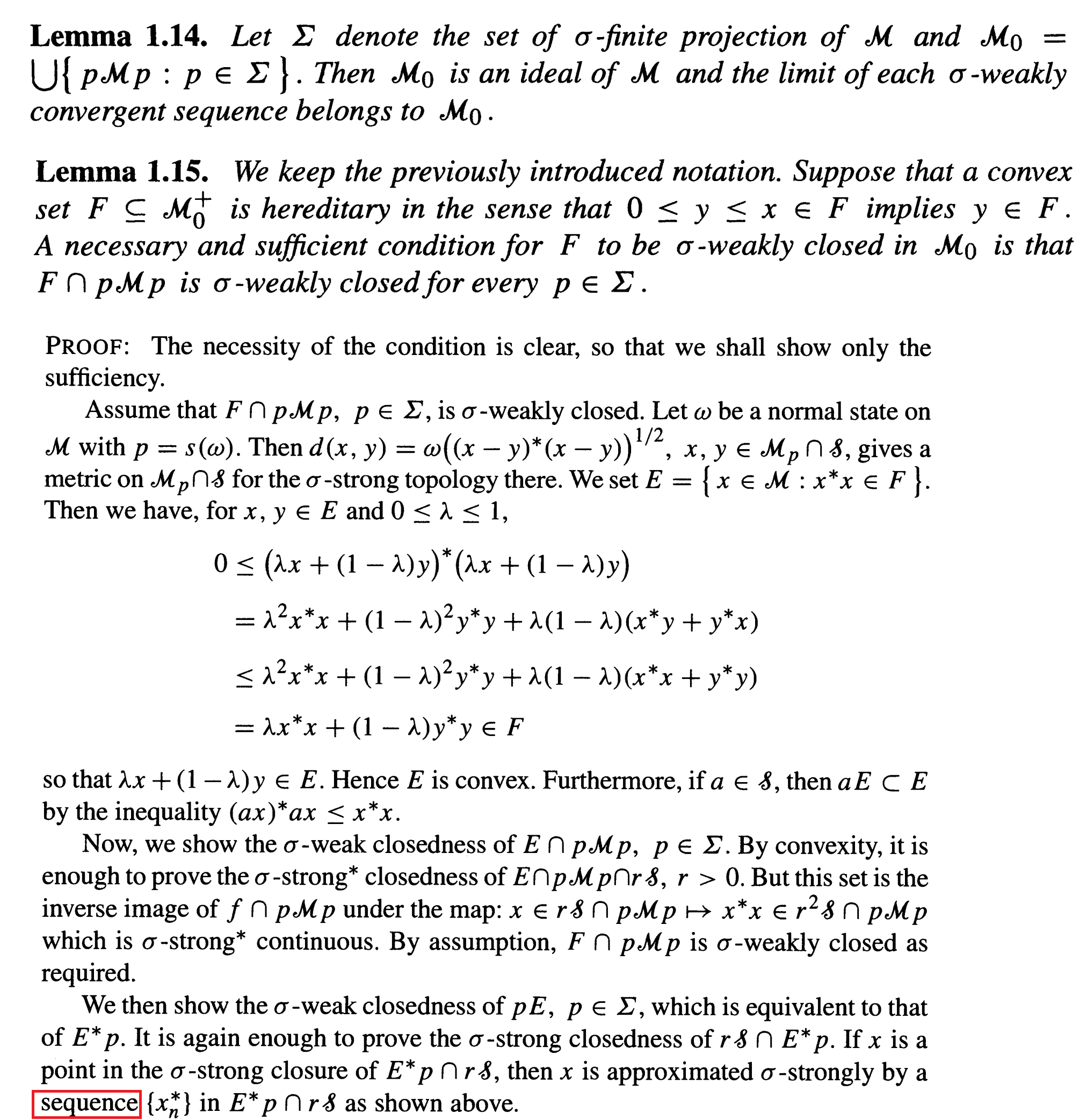Yes, the metric $d$ in Takesaki's proof metrizes the $\sigma$-strong topology on $\mathscr{M}p \cap \mathscr{S}$. Here $\mathscr{S}$ denotes the unit ball of $\mathscr{M}$ and it thus suffices to prove that if $a_n,a \in \mathscr{M}p \cap \mathscr{S}$ such that $d(a_n,a) \to 0$, then $a_n \to a$ strongly in the standard representation of $\mathscr{M}$.
By definition, $p$ is the support of the normal state $\omega$. Put $q = 1-p$ and choose a faithful normal semifinite weight $\varphi$ on $q\mathscr{M} q$. Then define the faithful normal semifinite weight $\psi$ on $\mathscr{M}$ by $\psi(x) = \omega(pxp) + \varphi(qxq)$. Let $L^2(\mathscr{M},\psi)$ be the associated GNS Hilbert space, which is our model for a standard representation of $\mathscr{M}$. For every $x \in \mathscr{M}$ with $\psi(x^* x) < +\infty$, denote by $\widehat{x}$ the corresponding vector in $L^2(\mathscr{M},\psi)$. Denote by $\mathscr{M}_{an}$ the $*$-algebra of analytic elements w.r.t. the modular automorphism group $\sigma^\psi$.
Since $d(a_n,a) \to 0$, we have $a_n \widehat{p} \to a \widehat{p}$. For every $b \in \mathscr{M}_{an}$, we have that
$$a_n \widehat{p b} = a_n \, J\sigma^\psi_{i/2}(b)^* J \, \widehat{p} = J\sigma^\psi_{i/2}(b)^* J \, a_n \, \widehat{p} \to J\sigma^\psi_{i/2}(b)^* J \, a \, \widehat{p} = a \, \widehat{p b} \; .$$
Since $\{\widehat{p b} \mid b \in \mathscr{M}_{an}\}$, is a dense subspace of $p L^2(M,\psi)$ and since $a_n$ is a bounded sequence, it follows that $a_n \xi = a_n
p \xi \to a p \xi = a \xi$ for all $\xi \in L^2(M,\psi)$. Thus, $a_n \to a$ strongly.

